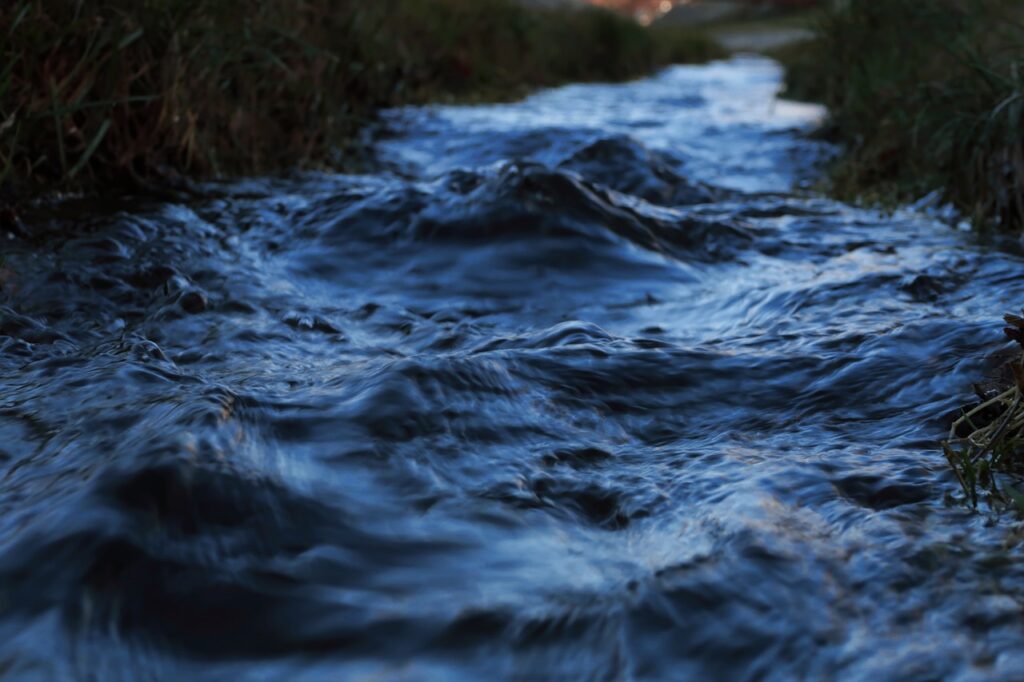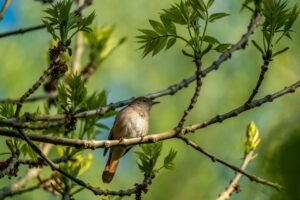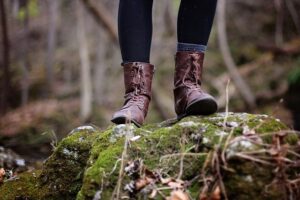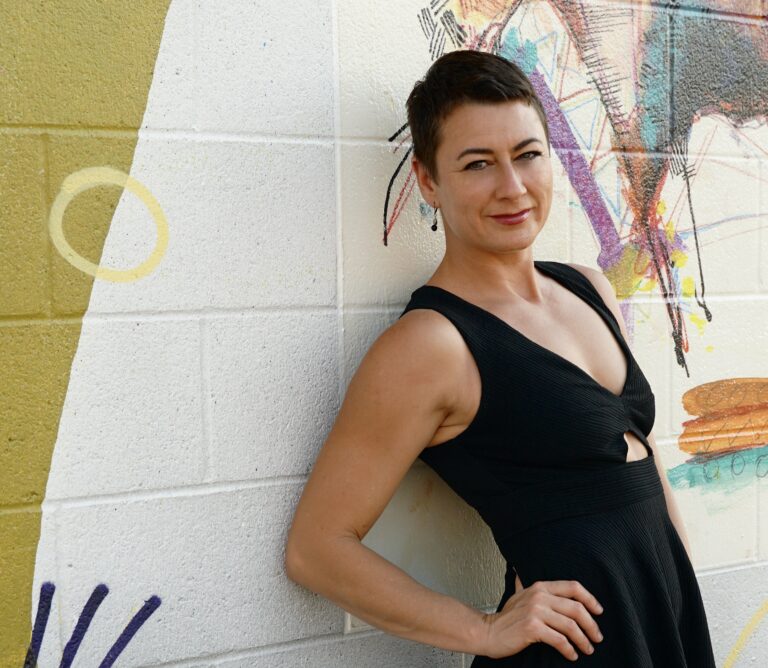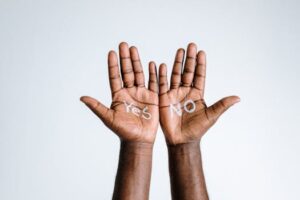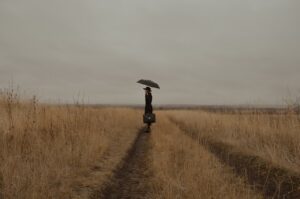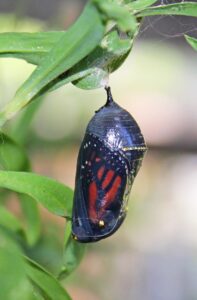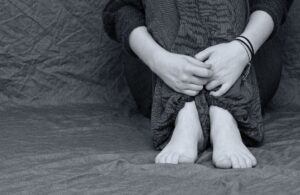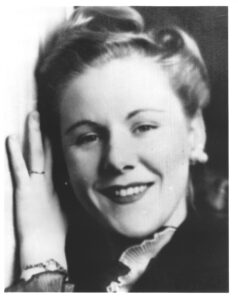It’s a stormy, rain-soaked spring day in Arkansas. The weather has been brooding for days, and I can feel it in my bones—its heaviness, its inward pull. I’m embracing the dreariness, letting it guide me as I type this week’s post. I’m perched on the third floor of the Crystal Bridges Museum library, gazing out through floor-to-ceiling windows as heavy raindrops splatter across the central pool.
Within my own dreary inwardness, I’ve peeled back another layer of a primal wound. I think this process began when I finally carved out some stillness, not just in my schedule, but in my being. My little body and busy mind like to stay in motion, but for a few weeks now, I’ve been able to hit pause on the constant momentum. That pause gave my emotions a chance to catch up to me, to rise to the surface and gently ask for the attention that’s normally shunted elsewhere. In the quietude, a long-buried pain began to emerge. Without the normal frenzy of constant activity, I was able to give it room to be heard, to be seen, to be understood.
That kind of witnessing reminded me of something simple, but profound: not all pain is loud. Some of it simmers beneath the surface, unnoticed until we slow down enough to feel it. And once we do, the way we respond matters.
For instance, when we’re in acute pain, such as when we break a leg, we immediately stop everything we’re doing. Extreme pain demands our complete focus. We cradle our hurting parts, apply pressure to the wounds, lean on someone, rest, elevate, ice, and tend to our pain. We allow the brokenness to be supported by wraps and casts and we don’t go marching around on healing limbs. And most importantly, we give it time. We don’t expect to rush through the temporary imposition of our injury—we understand that healing has its own timeline and process that can’t be forced along.
I think we often forget that emotional pain also requires our care and focus. Instead, we find ways to numb and cope or ignore and repress it. In my case, I stay productive, always just a step ahead of the ache, not giving it the space to surface or slow me down. I’ve been afraid of my pain, afraid to acknowledge its presence, as if admitting it would label me as fragile and disqualify me from a world that rewards the myth of having it all together. But emotions are not signs of weakness; they’re portals to our deepest beingness. To feel is to be alive—fully, painfully, beautifully alive. Both the joy and the sorrow are part of what it means to exist.
Mark Nepo speaks to this in The Book of Awakening. He describes our emotions—our pain—as a river that runs through us. He shares a moment of raw vulnerability with a friend, confessing to her that “the waters of life were splashing upon [his] shore.” Later that same day, he found his friend near tears as she whispered, “the river’s now in me.”
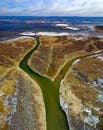 It’s as if we are all riverbeds—sometimes dry as a bone, and sometimes surrendering to a raging torrent that reshapes us completely. And this river flows from me to you and back again. It is a shared river. It connects us. Sometimes our rivers merge and flow and then diverge again and fall off into different places or go deep within hidden springs. Ever flowing, a kind of lifeblood that innervates us all beneath the masks we wear—our shared humanity.
It’s as if we are all riverbeds—sometimes dry as a bone, and sometimes surrendering to a raging torrent that reshapes us completely. And this river flows from me to you and back again. It is a shared river. It connects us. Sometimes our rivers merge and flow and then diverge again and fall off into different places or go deep within hidden springs. Ever flowing, a kind of lifeblood that innervates us all beneath the masks we wear—our shared humanity.
And so I’ve been allowing the river to run its course within me this week, letting it erode my composure and churn up things I’d rather not face. As rivers do, it exposed a hidden vein of truth. I’ve been harboring some resentments lately, but when I sat with each one, I realized that they were flimsy and disingenuous masks, mere decoys, for hurt I hadn’t yet admitted to. The resentment dissolved when I finally acknowledged the underlying pain. It had only been a shield protecting me from unearthing the discomfort of a long buried wound.
I didn’t want to admit how deeply others’ behavior had impacted me—how sensitive I really was, or how much old trauma was still lingering beneath the surface. But once I named the pain and traced it back to its roots, I could begin to disentangle it. I saw how recent hurts echoed much older wounds, and I stopped needing to blame anyone for reopening them. It became clear: no one had intended to hurt me. The pain came from something far more primal. And still, the pain was valid. It didn’t need to be minimized or covered by a cheerful facade. It only needed to be seen. To rise gently, like a spring bubbling up from a dark, unspoken part of me.
Once the quiet resentment I’d been carrying had been fully unmasked, the underlying pain revealed to me how often I’d been chasing unavailable friendships in the same pattern I’ve chased unavailable lovers. Now that I’ve stopped chasing, I can finally feel the ache that unavailability brings—without needing to make anyone wrong for it. No one was being intentionally malicious toward me. What I was reacting to wasn’t their behavior, but my old, tender wound beneath it, the one that bruises each time I feel overlooked, forgotten, or devalued.
 It’s as if every unfulfilled friendship has echoed that original longing to be close to someone who was never fully present. The “hard-to-get” friends held a certain magnetism, not because of who they were, but because they became stand-ins for an old emotional pattern: a familiar, if exhausting, emotional loop. I see now that what I mistook for connection was often the reenactment of unhealed grief; my inner child still mourning the loss of an unavailable caregiver. That sorrow has reverberated through the years, shaping how I’ve approached closeness, always trying to earn what should be freely given. So many of my companions, I now realize, mirrored a central theme: the ache of chasing what was never truly available.
It’s as if every unfulfilled friendship has echoed that original longing to be close to someone who was never fully present. The “hard-to-get” friends held a certain magnetism, not because of who they were, but because they became stand-ins for an old emotional pattern: a familiar, if exhausting, emotional loop. I see now that what I mistook for connection was often the reenactment of unhealed grief; my inner child still mourning the loss of an unavailable caregiver. That sorrow has reverberated through the years, shaping how I’ve approached closeness, always trying to earn what should be freely given. So many of my companions, I now realize, mirrored a central theme: the ache of chasing what was never truly available.
During my recent EMDR session, the roots of this pattern emerged, unearthing with ache and clarity what was long buried. I reprocessed a painful memory that I’ve revisited many times in the last few years, but this time its meaning unraveled and rewove itself in a way I hadn’t expected. In this memory, the ten year old version of me was finally feeling brave enough to speak my internal suffering out loud. I unburdened my little soul to my grade school guidance counselor, and she reflected back to me, with tears in her eyes, what appeared to be the weight of the world I was carrying internally. For the first time, I felt such a profound relief, almost excitement, of being seen—of having my experience witnessed and validated.
Wanting to share that relief, I told my mom about it when I got home from school that day. What followed was the only time I had ever witnessed my mother completely unhinge. She broke down and wept, wailing with fear that what I had already revealed was too much, and that it would get her children taken away. She forbade me from further sharing of our secret family struggles. My mother, who was always as composed as a statue, was suddenly unraveling in front of me.
In that moment, I became bewildered by the power of my voice, anguished that naming my needs could shatter the very person I depended on. I was shocked that my pain could afflict her so deeply.
I made an unconscious vow to protect her heart by hiding mine.
In that exchange, I absorbed the message that my pain was too much. That it must be buried. That the highest form of love was to shield others from my suffering, even at the cost of self-erasure.
And so, I carried that unspoken vow into my future relationships. I learned to self-abandon, to silence my internal pain for fear of burdening anyone else. It became deeply isolating, even unbearable at times—my covert cry for acceptance mingled with the belief that sharing my inner ache would drive people away or, even worse, harm them.
Over the years, I’ve slowly uncovered the layers of that ten-year-old memory, but something about this EMDR session allowed it to loosen, shift, and open in a fundamental way. I began to rewrite what that moment meant: My mother’s breakdown was not a wall between us, but a bridge.
Now, with a deeper awareness of the Common River—the one that flows through us all—that moment was, in truth, the most real connection we ever shared. It was the time when her dam broke and she could no longer hide behind her stoicism. Our rivers merged. In that lucid, heart-wrenching space, we both touched the raw ache of being human—of longing for safety and certainty, only to face the fact that neither is ever promised.
Looking back, it’s this fleeting experience of shared vulnerability—she as my mother, and I as her daughter—that I can now cherish. My courage to open up became a bridge between our rivers, and for a brief span, we were swept up in the same current. Her private pain met mine, and together we rode the surge of something beyond both of us.
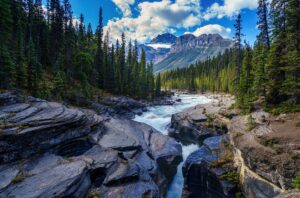 I went kayaking last week on an uncharacteristically low Buffalo River. I was awed by the lingering evidence of last autumn’s flooding—massive tree trunks lodged high in the branches, testifying to a time when the water rose twenty feet above its current level. I saw riverbanks rerouted, trees stripped bare by the force of the current.
I went kayaking last week on an uncharacteristically low Buffalo River. I was awed by the lingering evidence of last autumn’s flooding—massive tree trunks lodged high in the branches, testifying to a time when the water rose twenty feet above its current level. I saw riverbanks rerouted, trees stripped bare by the force of the current.
I compared this to how, in my own life, a river had recently surged—filling, swelling, and overflowing my banks. Now, as it recedes into a quieter flow, I can only pause and marvel at how it has reshaped me again, how it stripped resentment bare to what lay beneath it: the quiet ache of chasing unavailability in my closest relationships.
Instead of busying myself to escape the discomfort, I chose to sit with the pain—allowing it to be carved away, layer by layer, until I touched its source. I dove into the deep spring within, where a river had long been building pressure. I undammed that fundamental memory with my mother, once blocked up with disconnection, until it issued forth as a tributary of profound connection. A connection that brims beneath the surface of us all.
Very recently, a young friend lost her husband to cancer. I bow my head, knowing a torrent of grief will now move through her. No dam can stop it. It will carve her, reshape her, and leave banks that may be forever changed. But her resilient riverbed will remain—just as mine has—and the forces that shape and reshape us all will continue to move through her, and me, and you, and back again.
And perhaps the best we can do is allow it to flow unhindered—to witness it in ourselves, and in each other. To be humbled by the aftermath of its flood, which doesn’t leave us ruined, but reveals the shape of our inner landscape. It points us back to our source: the quiet presence of our own witnessing, the self-validation that leads to our deepest healing.
This river that flows through us all, when we stop damming it, but rather let it rise and run its course—reminds us how deeply we are connected beneath the thousand masks we wear.
Sometimes, the most profound connection doesn’t come through words or solutions, but in simply allowing our rivers to meet—grief to grief, tenderness to tenderness, ache to ache—carving space for something real to flow between us.

